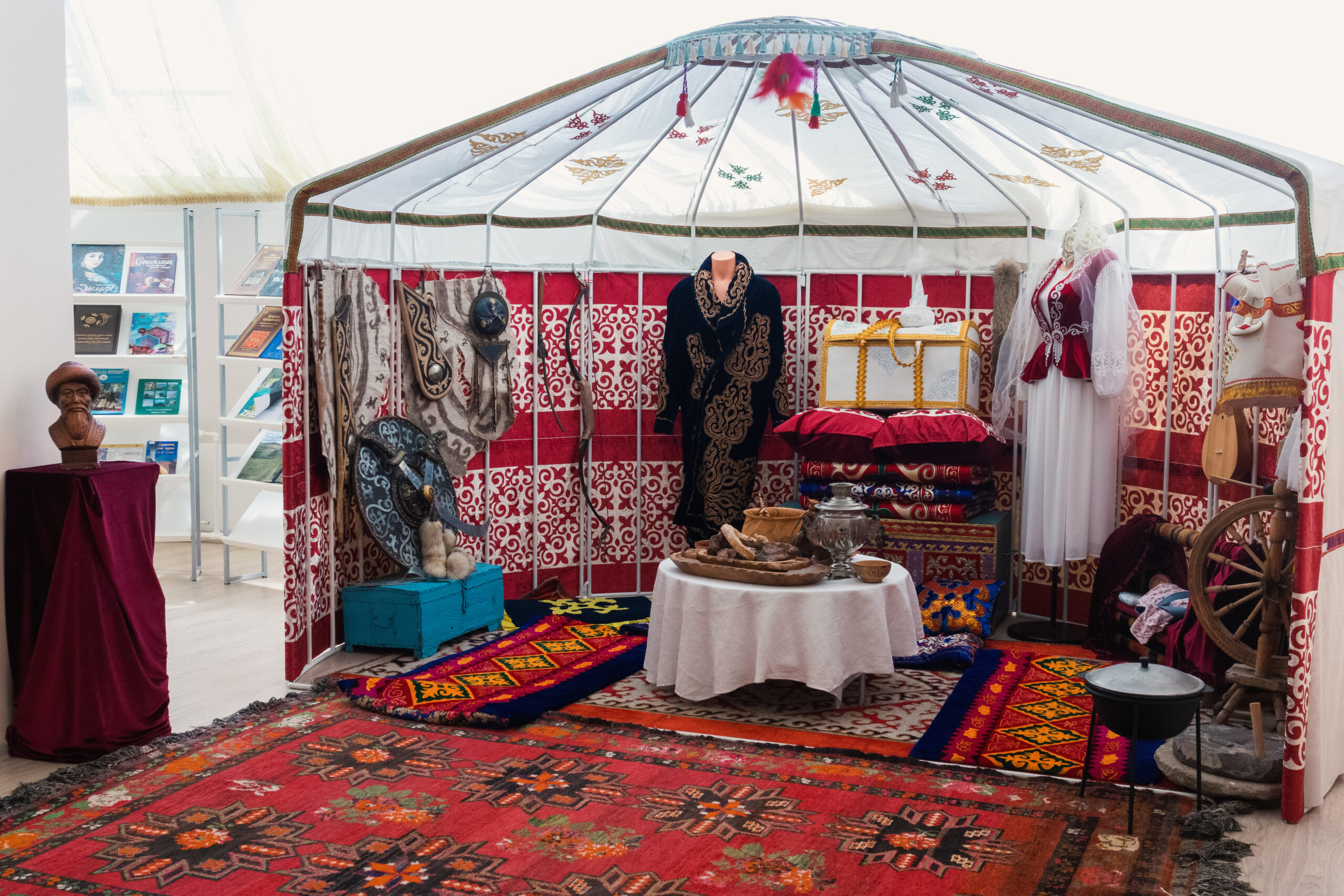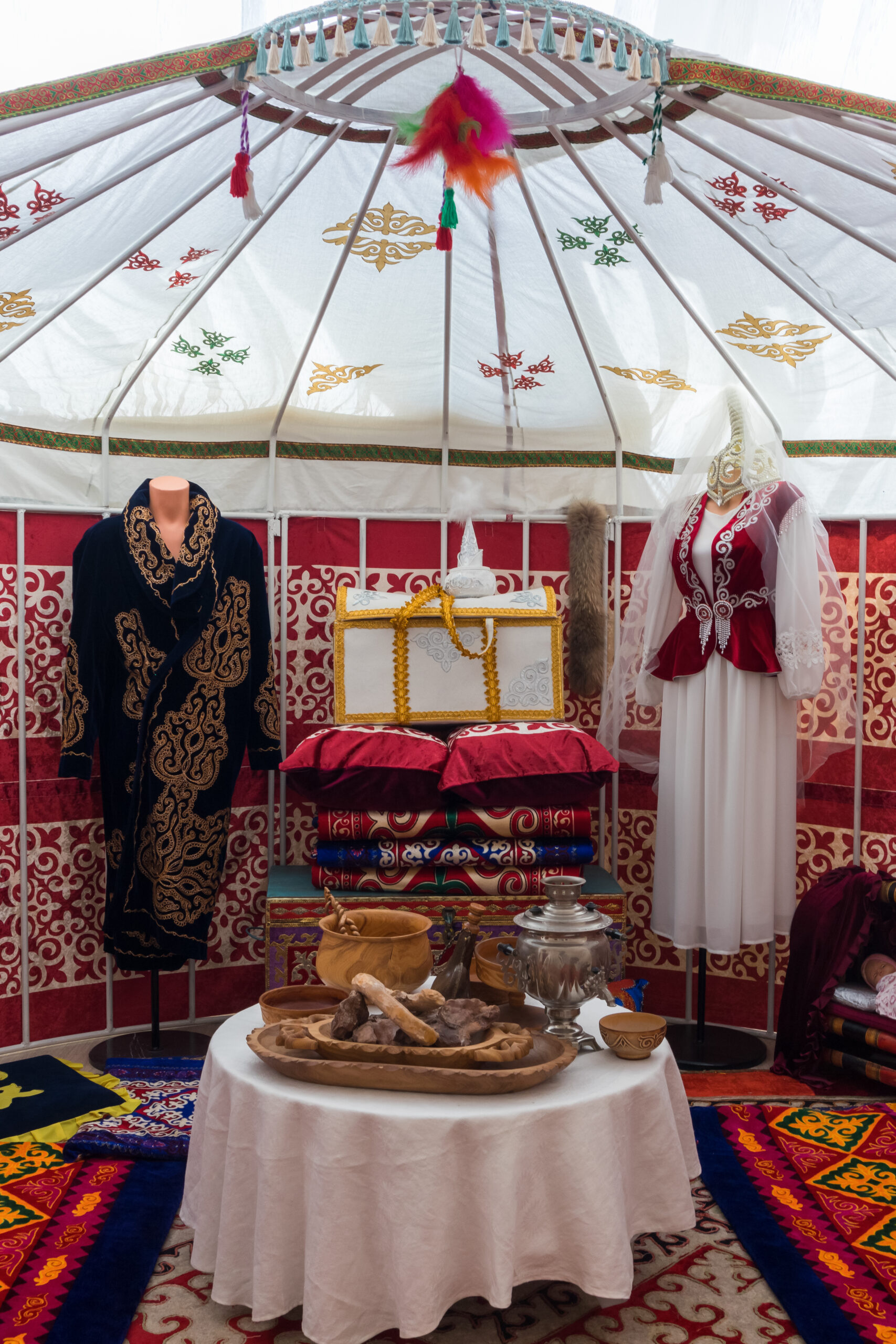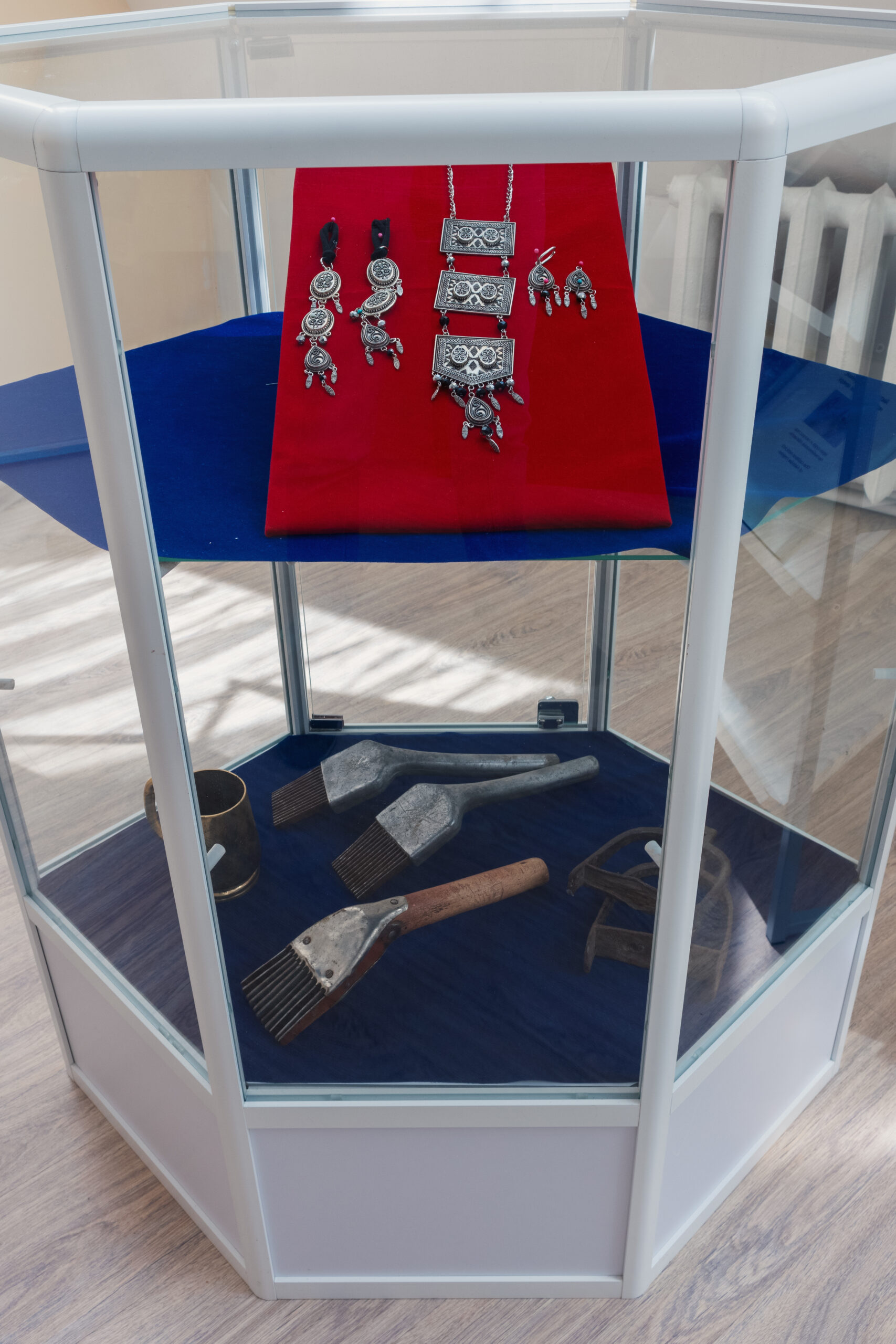The exhibition hall «Daestur men Gurup»
An exhibition hall «Daestur men Gurup» was opened in 2022 to propagate Kazakh national traditions and material values. A partially open model of a yurt with all necessary equipment is in the hall. The yurt is the main real estate of ancient nomads; it can be disassembled and assembled very quickly and is convenient for transportation. The origin of yurt dates back to bronze era. Yurts became most widespread from the 7th century BC, and felting wool to make felt became a well-known profession.
A wall of the yurt is round; a roof is vault. The yurt consists of three main elements – kerege, uyk, shanyrak. Kerege is a movable mesh wall, a wooden part that connects upper part of kerege and a dome shanyrak is called uyk. The more kerege in the house, the more uyks will be. Every part of kerege that forms the wall of the yurt is kanat.
The Kazakh people have long lived in the yurts, so household items were made according to the national craft tradition, adapted to nomadic life. Dishes made from various materials go perfectly with the decoration of the yurt. Household utensils were made to be compact and convenient for wandering. Household items include a chest, bed items, rugs, plaids, blankets, pillows, items for storing and transporting things and utensils – Korzhyn.
Sandyk (the chest) is one of the wooden household items of the Kazakh people. Clothes and jewelries are put into it. Kazakh masters made the chest of birch and black willow trunks. The chest was decorated beautifully with iron and copper decorations and riveted patterns. The chest is one of the oldest pieces of furniture used in people’s lives since ancient times. Blankets and pillows were placed on the chest.
Kurak korpe was a nice blanket that was laid in the most honorable place of the yurt – tor. For kurak korpe, patterns were made from scraps of fabric in the form of various figures. From time immemorial, the hospitable Kazakh people considered the tor a “holy place” intended for guests. The inner part of the kurak korpe is filled with cotton wool, sheep or camel hair.
On the right side of the threshold of the yurt there was a fireplace, the symbol of which is a kazan (a cauldron). Prosperity and welfare begin with the fireplace that defines happiness and wealth. Tas Diirmen (the mill) is next to the fireplace that is made of stone and it is necessary to grind grains and to produce floor.
There is a round table in the middle of the yurt with all necessary utensils for a meal. Astau is a special wooden oblong dish made of birch and it is used to serve traditional national Kazakh food – et (meat). Also on the table there is a samauryn (samovar), wooden utensils called shara, kese, toast for kumys, ozhau, zeren, intended for pouring liquid food.
Samauryn is a special dish, where water is boiled for tea.
Inside the yurt the Kazakh people hang holy items like kamshy, dombra, helmets, bows and arrows, swords and shields, national clothes in a prominent place. Helmets, bows and arrows, swords and shields were in use by the Kazakh people to protect their lives when an enemy attacked them.
Kamshy consists of a handle and a whip. Kamshy were considered a symbol of strength and honor of the head of the family in the house.
Dombra is one of the most revered national treasures in Kazakhstan. It is a two-string musical instrument, which has been long used in Kazakh culture. Dombra is the instrument with wide capabilities, which is used to accompany solo songs, to create melodies, in folk music, and to perform classical works.
Inside the yurt there is a lullaby for a baby called «Besik» and made of wood. It consists of zhastyk (a pillow), mamyk (a blanket), zhayalyk (diaper), and bedspread.
Korzhyn is a special bag with 2 parts that a wanderer can tie on a back of a horse or a camel and use it during his wandering. Our ancestors used home-made felt carpets called alasha, kilem, syrmak as the floor covering of the yurt.
Alasha is a rug woven from different wool or cotton and wool dyed in different colors. Since Alasha is small in width, several pieces are sewn together when making mats, rugs, and baskets.
Tekemet is a very colorful and patterned felt mat. To sew and weave such Tekemet is a very colorful and patterned felt mat. To sew and weave such rugs, our grandmothers made special woolen threads on a spinning wheel and dyed them in different colors.




